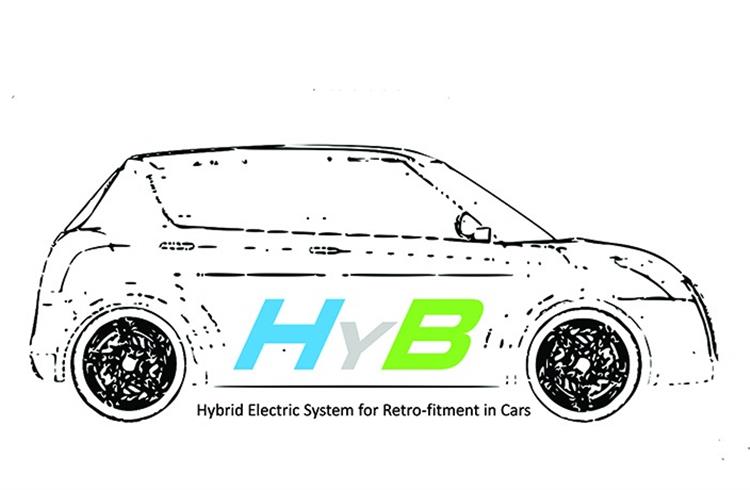India is at the precipice of a significant transformation in its mobility sector, with innovations in xEVs (retrofit cars), hybrid, electric, and connected solutions driving a new era of transportation. The integration of these technologies not only addresses the environmental challenges faced by the country but also paves the way for a smarter, more efficient, and sustainable future. The emergence of these solutions is a crucial response to India’s growing urbanization, pollution levels, and dependence on fossil fuels.
Rise of xEVs, Hybrid and Electric Vehicles
Hybrid and electric vehicles (EVs) have become a focal point in global efforts to reduce carbon emissions and reliance on fossil fuels. The shift towards EVs in India has been further accelerated by supportive government policies, including the Faster Adoption and Manufacturing of Hybrid and Electric Vehicles (FAME) scheme, which provides subsidies and incentives to EV buyers and manufacturers. According to Fortune Business Insights The India electric vehicle (EV) market size was valued at USD 8.03 billion in 2023. The market is projected to grow from USD 23.38 billion in 2024 to USD 117.78 billion by 2032, exhibiting a CAGR of 22.4% during the forecast period.
(Source: https://www.fortunebusinessinsights.com/india-electric-vehicle-market-106623)
The government’s commitment to reducing emissions and increasing EV adoption is further bolstered by the introduction of the National Electric Mobility Mission Plan (NEMMP). Additionally, automakers in India are rapidly shifting their focus to electrification, with several well-established manufacturers investing in electric mobility solutions. The market is expected to see significant growth with Electric vehicle sales in India are projected to reach 10 million units by 2030, creating 5 million jobs as per industry experts.
Connected Technology Enhancing Mobility
Connected vehicles are becoming an integral part of India’s automotive landscape, offering a host of benefits from real-time tracking to improved safety features. These vehicles leverage the power of data analytics, artificial intelligence (AI), and the Internet of Things (IoT) to optimise driving experiences and contribute to smoother traffic flow in congested cities. A connected vehicle ecosystem also provides valuable insights into driver behaviour, vehicle maintenance, and overall performance, thus improving the efficiency of the mobility sector.
As connectivity becomes a core component of vehicle technology, the rollout of 5G networks in India is set to revolutionise how vehicles communicate with each other, with infrastructure, and with centralised systems. The The global connected car market is projected to grow from USD 12.4 Billion in 2024 to USD 26.4 Billion by 2030 at a CAGR of 13.3% (source: https://www.marketsandmarkets.com/Market-Reports/connected-car-market-102580117.html )
Connected technologies enable features such as over-the-air updates, remote diagnostics, predictive maintenance, and location-based services. These solutions can significantly enhance the ownership experience, lower operational costs, and improve the overall sustainability of vehicle fleets. With improved connectivity, fleet operators in India can also implement smarter logistics and supply chain solutions, optimizing fuel consumption, reducing emissions, and enhancing fleet management.
Hybrid Vehicles: A Transition to Clean Mobility
While EVs dominate the conversation around sustainable mobility, xEVs or hybrid vehicles play an important role in transitioning toward fully electric solutions. By combining the benefits of an internal combustion engine (ICE) and an electric motor, hybrid vehicles offer a unique solution for a market like India, where charging infrastructure is still in its early stages of development.
Hybrid vehicles are seen as a more practical choice for Indian consumers who may not have access to widespread charging stations. They provide a range of benefits, including reduced fuel consumption, lower carbon emissions, and fewer range anxiety issues. The India Hybrid Vehicles Market size is estimated at 0.42 billion USD in 2024, and is expected to reach 1.47 billion USD by 2030, growing at a CAGR of 23.30% during the forecast period (2024-2030) (Source: https://www.mordorintelligence.com/industry-reports/india-hybrid-vehicles-market)
This growth is driven by advancements in battery technology and retrofit technology that is helping achieve a more significant shift toward electrification in the auto sector.
Moreover, solutions like xEV have been designed to complement India’s existing infrastructure while pushing the envelope toward clean mobility. These solutions also help manufacturers and consumers comply with increasingly stringent emission norms and fuel efficiency standards laid out by the government.
Smart Charging Infrastructure and Ecosystem
The need for efficient and widespread charging infrastructure is a critical factor in driving the adoption of hybrid and electric vehicles. The Indian government has taken steps to address this by approving a Rs 3,000 crore package for the development of EV charging stations across the country.
Innovations in smart charging are also paving the way for efficient power usage and more accessible charging solutions. Smart charging stations integrate renewable energy sources, grid optimisation, and vehicle-to-grid (V2G) technology, which allows vehicles to supply power back to the grid. This type of integrated ecosystem not only provides convenience for EV owners but also contributes to energy conservation and grid stability.
The rise of ultra-fast charging technology also means that charging times are rapidly decreasing. This technological advancement addresses one of the primary barriers to EV adoption in India—charging time—and will play a significant role in the mainstream adoption of EVs and xEVs.
The future of Indian mobility is unmistakably tied to xEVs or hybrid-electric-connected solutions. These innovations are leading to more sustainable, efficient, and safer transportation options that will transform how people and goods move across the country. As India grapples with air pollution, traffic congestion, and limited natural resources, these technologies provide a promising solution to these challenges while helping the nation reduce its carbon footprint and achieve climate goals.
With the concerted efforts of government bodies, manufacturers, and technology innovators, India is on track to redefine its mobility landscape in line with global sustainability standards. The convergence of xEVs, Evs, and connected solutions represents a powerful shift that will not only impact the future of Indian transportation but will also contribute significantly to the global push for greener, smarter, and more connected mobility solutions.
This article is accredited to: Mr. Nikhil Khurana, MD and CEO, Folks Motor.

